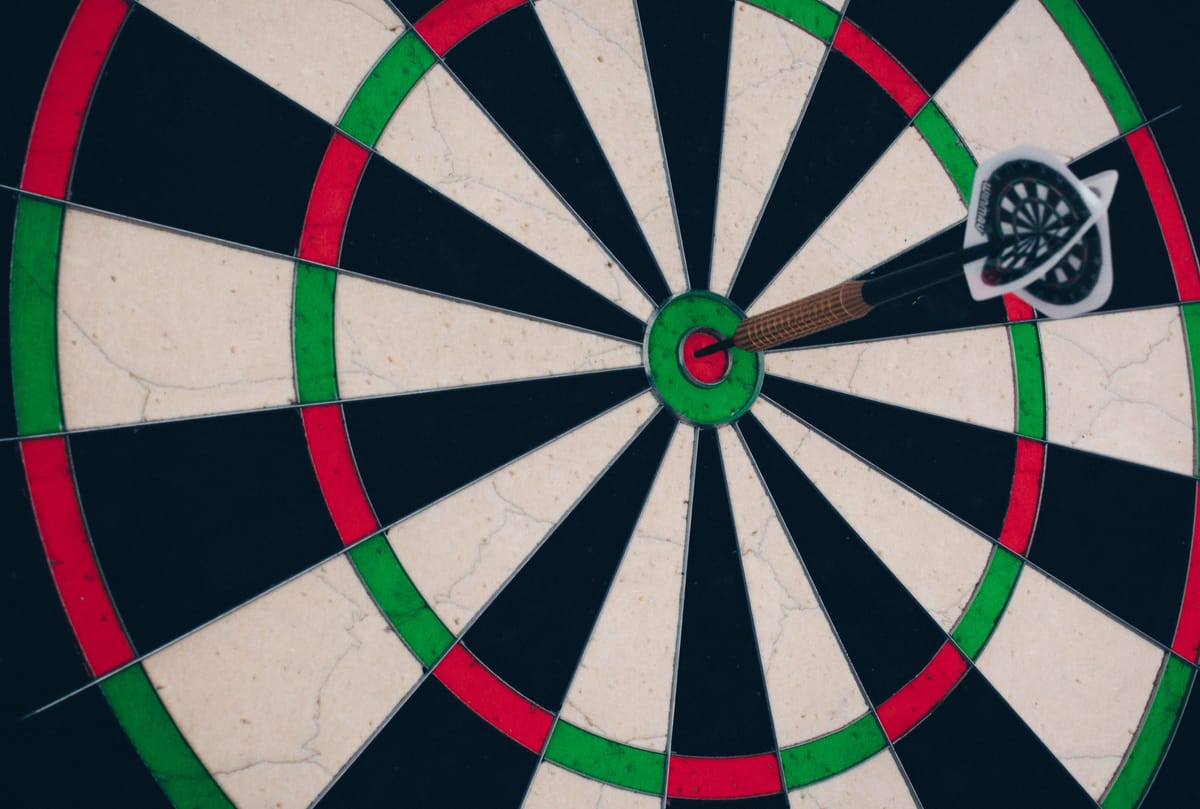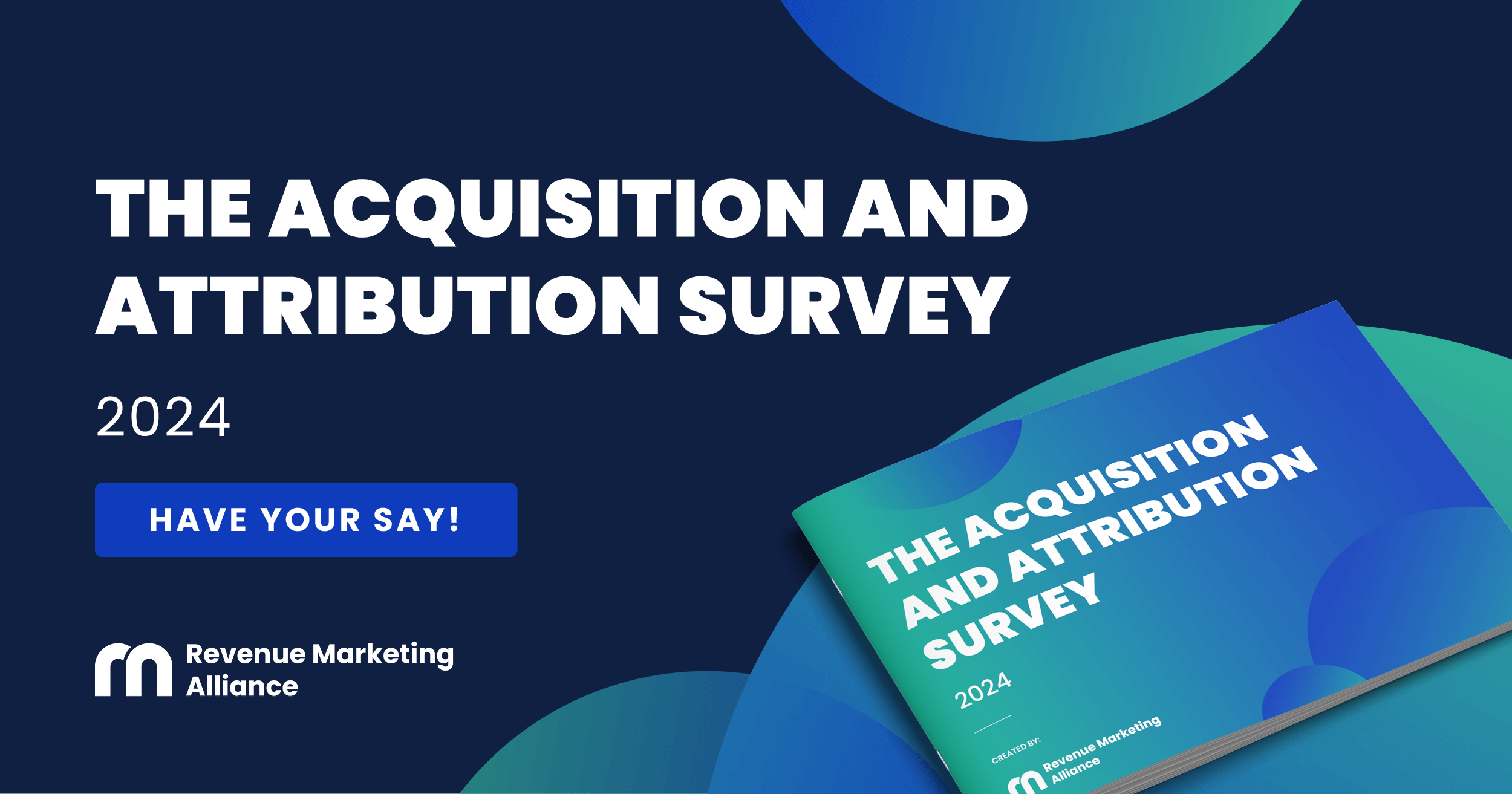Meet John. He's a 35-year-old digital marketing manager at a tech startup. At work, he's laser-focused on driving online leads and social media growth. Outside work, he's an early adopter of new gadgets and is highly active on sites like Reddit.
Now meet Sarah. She's a 45-year-old brand manager at a consumer goods company. Her business goals revolve around increasing in-store sales and POS (point of sale) marketing. She mainly connects with customers through Instagram and in-person events. One of the things she likes to do in her free time is browse Pinterest for DIY ideas.
On the surface, John and Sarah have different needs, utilize different marketing channels, and enjoy different hobbies. But here's the thing – they're both your customers. How can two people with such different roles be interested in the same product or service? And how can you effectively market your offering to both parties?
The answer is thoughtful customer segmentation. By dividing your customers into groups based on their business needs, behaviors, and motivations, you can market in a highly targeted way and speak to them in a language that resonates.
In this article, we’ll address:
- What is customer segmentation?
- Why use customer segmentation?
- Customer vs market segmentation
- Four key types of customer segmentation
- The importance of creating accurate buyer personas
- Steps for creating valuable buyer personas
- Why buyer personas improve your customer segmentation efforts
- How to segment your customers
- A recap of customer segmentation
What is customer segmentation in marketing?
Customer segmentation is the practice of dividing your overall customer base into smaller, more specific groups based on shared characteristics. The goal is to categorize customers who are similar to one another in specific ways, such as demographics, behaviors, motivations, spending habits, interests, and more.
With customer segmentation, you can break down a large customer pool into smaller segments. Rather than viewing customers as one generic group with identical needs, segmentation allows you to recognize that different subsets of customers have unique requirements, priorities, and values.
This level of insight enables you to develop highly targeted marketing strategies, messaging, products, services, and experiences that closely align with what each core customer segment cares about most.

It provides the framework to truly understand your best customers on a more intimate level – sounds great, right? Here’s a bit more on why you should use customer segmentation…
Why use customer segmentation?
Customer segmentation provides immense strategic value if you’re looking to boost marketing effectiveness, increase retention and loyalty, and foster deeper emotional connections with customers.
Rather than taking a broad, one-size-fits-all approach, segmentation enables you to recognize that diverse clusters of customers have very different needs. This accelerated understanding means you can take your learnings and craft tailored messaging, experiences, and products that align with the values of each core group.
For example, you can create marketing campaigns that feature messaging personalized to resonate with the specific pain points and priorities of each segment. You can design experiences that satisfy the unique needs and expectations of high-lifetime-value customers, and you can allocate your product development resources to enhance features that delight key target segments.
When customers feel understood through this hyper-personalized approach, they’re more likely to engage with your brand, purchase again, and remain loyal over time. Their lifetime value increases substantially.
Even if they spend a small amount each time, their consistent return is more valuable than a big one-off spender. This type of customer behavior increases your customer lifetime value (CLV).
Customer segmentation also provides you with valuable strategic insights that inform everything from acquisition strategy to competitive differentiation. By thoroughly analyzing the characteristics and behaviors of your best customers, you can more effectively focus your efforts to attract similar high-value segments. Not to mention, highly tailored customer experiences can be difficult for competitors to replicate.

Customer segmentation vs. market segmentation
The difference between customer and market segmentation essentially relates to the scale of what they cover.
Customer segmentation goes into the details, focusing on smaller groups of customers and prioritizing their experience with your product. It looks at a subset of the market tailored to your existing customers.
Market segmentation is broader – it aims to divide the overall market, including consumers who may or may not be customers currently, and seeks to classify groups across an entire industry or category.
Many companies find customer segmentation to be more immediately actionable, since it deals directly with understanding and optimizing efforts for existing relationships, rather than hypothetical ones, whereas granular insights into active customer groups tend to have clearer applications for crafting targeted messaging and experiences.
However, market segmentation can still provide useful directional context in terms of evaluating the scope of needs and behaviors across your total market.
When it comes down to it, the two approaches mutually complement and inform one another.
Four key types of customer segmentation
Businesses generally utilize these four main types of segmentation to group their customers: Demographic, psychographic, geographic, and behavioral.
Demographic
Demographic segmentation divides customers into groups based on observable, objective criteria like age, income bracket, education, ethnicity, profession, family status, and more.
Analyzing demographic data enables you to analyze quantifiable information across different customer groups, and is a simple but effective way to associate your customers.
Psychographic
Psychographic segmentation could be viewed as the complete opposite of demographics. It aims to group customers according to psychological attributes like attitudes, personality, values, interests, motivations, and lifestyles.
You can reveal these drivers through direct customer research such as surveys and interviews. Psychographic insights truly come into play when you want to create inspiring messaging that resonates.
Geographic
Geographic segmentation is the easiest to identify. It categorizes customers by location-based factors including country, region, city, postal code, population density, and climate.
This type of segmentation allows for localization and personalization based on your customers’ regional needs.
Behavioral
Perhaps one of the most useful segmentation types for marketers is behavioral segmentation. It divides customers based on their activity, for example – how they interact with a brand before, during, and after transactions.
Behavioral segmentation includes analyzing patterns related to spending habits, loyalty, product usage, engagement, decision journey, and more, and can be used to predict future actions.
An effective customer segmentation strategy typically utilizes a combination of these methodologies, blending demographic data, regional insights, psychographic research, and behavioral analytics to create multidimensional profiles of target customer groups. This enables you to deeply understand and serve your ideal customers.
With these approaches to segmentation in mind, let's explore the importance of developing detailed buyer personas to represent your core customer segments and inform targeted marketing.

The importance of creating accurate buyer personas
Buyer personas are like your marketing secret weapon – when crafted correctly, they're invaluable. They're fictional representations of your ideal customers, but they make marketing way more realistic.
People relate to other people, not faceless corporations, and buyer personas put a name and a face to your target segments. They transform abstract demographics into living, breathing people with stories.
This makes your messaging instantly more human and relatable. It allows you to speak directly to customer pain points from a place of empathy. This drives emotional engagement through shared experiences and deep insight into what motivates each persona.
But generic, inaccurate personas can seem disingenuous. You need to put in the work to uncover what truly makes each segment tick. Here's how:
Steps for creating valuable buyer personas
Conduct preliminary research
Gather any existing customer data you have through surveys, interviews, past purchases, web analytics, etc. Look for early patterns related to demographics, psychographics, behaviors, motivations, and pain points.
Identify key differentiators
Analyze your preliminary data for distinguishing variables that segment groups of customers. Look at their differing goals, challenges, values, and interests based on factors like job role, seniority, industry, etc.
Map provisional personas
Use your early insights to draft a few provisional personas with descriptive names and photos. Include bios, stats like age and location, and some key challenges and motivations. This’ll evolve as you learn more.
Conduct sales interviews
Connect with sales reps, account managers, and customer-facing roles to gather their direct customer insights. Incorporate this feedback into detailed narratives and attributes for each persona.
Fill research gaps
Seek additional customer input through surveys, user testing, online listening, and customer support analysis. Look for new trends and refine existing personas.

Craft engaging narratives
Make each persona come to life as a well-rounded character. Write a “day-in-the-life” narrative and call out specific frustrations, motivations, and quotes based on research.
Identify messaging opportunities
Note which solutions and messaging will appeal to each persona based on their unique perspective, and use this to directly inform content creation.
Customer validation
Share your final personas with some real customers and contacts. See if they resonate or if any elements feel off-base from their self-perception. Refine them if needed.
Prioritize target personas
Clarify which personas represent your best-fit target customers based on revenue potential, likelihood of conversion, and marketing effort needed – focus on these high-value groups.
Set a refresh schedule
Plan to revisit your personas every 6-12 months. Customers and their needs evolve, so your personas should be continually updated as a living document.
So take the time to develop authentic buyer personas. They're the secret to crafting content that deeply resonates across all your target segments.

Why buyer personas improve your customer segmentation efforts
Developing detailed buyer personas provides immense value to marketers looking to effectively segment their target customer base.
By revealing common behaviors, motivations, pain points, and values within customer groups, buyer personas enable a more intentional and optimized customer segmentation strategy.
Specifically, accurate buyer personas help improve customer segmentation by:
- Identifying the most valuable target segments for your marketing efforts and budget based on conversion potential. This allows you to allocate resources efficiently.
- Enabling personalized messaging and content tailored to the specific problems, interests, and perspectives of each sub-segment. This drives higher engagement and conversion rates.
- Allowing for better identification of emerging new micro-segments earlier based on changing psychographics and needs. Keep your strategy agile.
- Providing an intuitive, empathetic understanding of what matters most to each customer type. This boosts relationship-building.
- Eliminating guesswork by directly linking marketing to the key factors that persuade and convert each sub-segment.
Detailed buyer personas are indispensable for executing highly targeted, optimized marketing across all your core customer segments. They bring your best-fit customers into sharp focus.
Now we’ve got that covered, let’s get into how to segment your customers.
How to segment your customers
Starting with a bulk load of customers can be overwhelming, so where do you start segmenting to make the overall customer ecosystem make more sense to you?
Here are three simple steps to follow:
Step one: Identify your best customers
Rather than taking a scattershot approach to your entire customer base, it's strategically important to identify the specific segments that represent your very best, i.e. highest-value customers. This allows you to focus your efforts on the groups with the greatest lifetime revenue potential.
Start by analyzing your existing customer data to spot demographic, psychographic, geographic, and behavioral trends. When assessing how a specific demographic is performing, for example, make sure you layer your volume data with your performance data, so you’re not just looking at the purchase rate alone.
Useful things to look at here are the churn rate, average revenue per customer, acquisition rate, and product usage.

Look for two to four core clusters that consistently over-index on key metrics like order volume, repeat purchase frequency, engagement levels, satisfaction scores, lifetime value, and referral rates.
Also, consider acquisition difficulty by assessing how much effort certain segments require in terms of marketing costs, sales nurturing, and onboarding, i.e. how much “effort” you’ve made, or have to make, to attract and retain your customers. This information will let you know if a certain segment is worth keeping or not. Look at things like customer acquisition costs, scalability, and other competitors for this segment.
The goal is to surface a short list of priority customer profiles that strike the ideal balance of having large group numbers, as well as being highly profitable, and relatively simple to acquire and retain over the long term.
Step two: Deeply understand your segments
Once you’ve identified the best segments for your organization to focus on, the next step is to truly understand them.
Resist the temptation to make assumptions – instead, do the work to uncover their unique goals, motivations, challenges, values, and interests through market research, customer interviews, and data analysis.
This is where the buyer personas we spoke about come in.
Construct detailed buyer personas for each target segment. Here, you want a “quantified buyer persona,” i.e. one that’s created from business metrics rather than personal attributes. Things like jobs, pain points, and gains are categorized based on functional, personal, and social value.
You’ll want to map out their holistic end-to-end journey across your brand, noting how their perceptions, questions, and emotions evolve across the stages of awareness, consideration, purchase, onboarding, and loyalty.
Identify the factors most important in driving their decision-making when evaluating solutions like yours, and learn what content types, messaging, and channels each segment responds best to. And, while you’re at it, benchmark competitors to analyze gaps where you can better serve each group.

Once you understand your customer segments, you can now evaluate your current workflow, and what it’s doing to work on these segments. This might be nothing, or you may already be working well for these segments.
Step three: Deliver targeted experiences
This is where you evaluate what experiences currently exist for your customer segment/s. Good or bad, you should understand where you need to go from your current position.
Transform generic experiences into ones finely tuned for your customer’s unique needs and preferences. For example, target your marketing campaigns, content, and messaging to align with the pain points, interests, and motivations of each group.
Equip your sales team to discuss use cases and priorities tailored for each persona. Make your onboarding flows, help documentation, and training programs laser-focused on the goals and questions of each segment.
Use your insights to prioritize your product roadmap, refine your survey questions to uncover granular feedback from each group, and craft your communications to fit their preferred tone, format, and cadence.
Apply what you learn about your segment to the entire marketing funnel. Some easy ways to do this are by reevaluating your onboarding process, considering how you compare to competitors, and getting feedback on your customer support systems.
A recap of what customer segmentation is and how it helps your marketing efforts
Customer segmentation is the practice of dividing your customer base into groups based on common characteristics, behaviors, and needs. Rather than taking a one-size-fits-all approach, segmentation allows you to gain a deeper understanding of your ideal customers and what motivates them.
This enables more personalized and relevant marketing tailored to each segment's requirements and priorities.
There are four main types of segmentation: Demographic, geographic, psychographic, and behavioral. You’ll likely need to utilize a combination of these to get a well-rounded profile of your best customer groups.
The goal is to identify two to four core segments that represent your highest-value, most readily-converted customers. These become the focus of your marketing efforts.
Creating detailed buyer personas for each target segment is crucial for truly understanding their goals and perspectives. It allows you to craft messaging that emotionally resonates by speaking directly to each group's pain points. When you consistently demonstrate an intimate understanding of your customers’ needs, you build trust, loyalty, and advocacy over time.

With the wealth of content and experiences currently available, segmentation is more important than ever. By tailoring every step of the customer journey for each high-value segment, you create remarkable experiences that keep them engaged.
From targeted campaigns and personalized product features to tiered service levels, your marketing efforts should revolve around your best segments.
Done right, segmentation is a highly impactful strategy that’ll foster sustainable growth for your business.



 Follow us on LinkedIn
Follow us on LinkedIn



